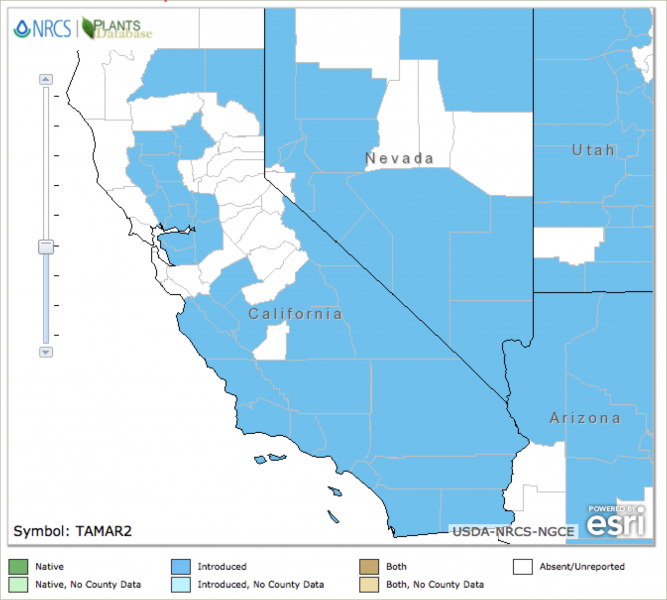 Tamarisk, or saltcedar (genus Tamarix), is native to Asia. Introduced in the 1800’s for horticulture and erosion control, tamarisk has since taken over much of the west, including a number of California rivers and wetlands, particularly in arid and semi-arid regions.
Tamarisk, or saltcedar (genus Tamarix), is native to Asia. Introduced in the 1800’s for horticulture and erosion control, tamarisk has since taken over much of the west, including a number of California rivers and wetlands, particularly in arid and semi-arid regions.
Tamarisk is easily identified by its thin branches and scaled leaves, giving the tree a feathery look. They can grow to be anywhere from 1-18 m and foliage ranges from dark green to a light grey-green depending on the species.
To learn more about Tamarisk, please visit Invasive Species - Tamarisk
Tamarisk Impacts

- Can displace native trees like: cottonwood, willow, and mesquites
- Poor habitat for birds and other wildlife
- Poor forage for livestock
- May increase erosion and sedimentation
- Restricts recreation access
- Increase soil salinity
- Promotes wildfire (even when green) – fires can kill native trees, but tamarisk re-sprouts from the base.
Solutions
- Conventional Control uses mechanical cutting and clearing, and herbicide applications. However, these methods are limited by their expensive cost and limited access to some sites.
- Biological Control, or Biocontrol, is an alternative weed management method used successfully against Tamarisk in other western states.
The History of Biological Control of Tamarisk Biological Control of Tamarisk in California
